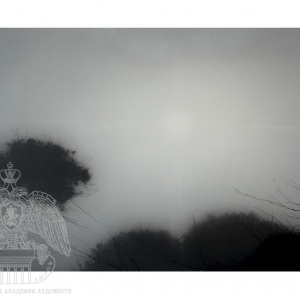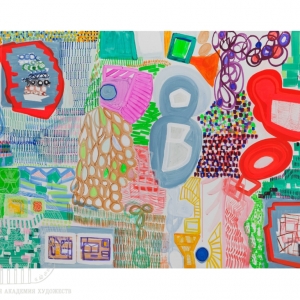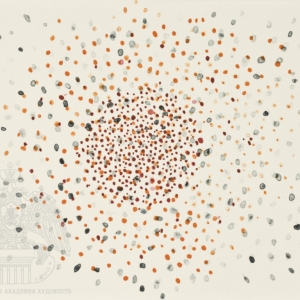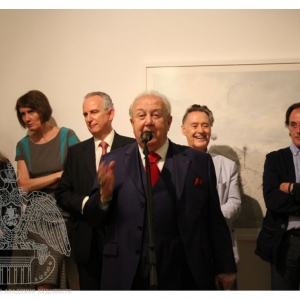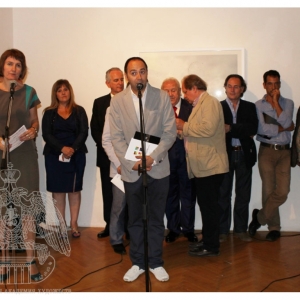Axes of Diversity. Contemporary Art of the Balearic Islands: Exhibition at the Russian Academy of Arts
03 July – 18 August 2013
Tsereteli Art Gallery
19 Prechistenka street, Moscow
Organized by the Spanish Embassy in Moscow, the Government of the Balearic Islands, Institute of Studies of the Balearic Islands in partnership with the Russian Academy of Arts, the Axes of Diversity exhibition for the first time in Russia presents works by four of the most renowned in the Balearic Islands visual artists - Ricard Chiang (Barcelona, 1966), Rafa Forteza (Palma, 1955), Monica Fuster (Palma, 1967) and Pep Guerrero (Port de Soller, Mallorca, 1966).
Being an extension of the Strands of Diversity exhibition (Paris, 2012) it offers a possibility of delving in its main thesis: the construction of artistic identity in the era of digital technologies, the Internet and iconic globalization. These artists compete among themselves and wrestle with their environs strongly adhering to a system of personal values.
The project’s curator Gabriel Carrio, art historian and critic, defines the principle ideas which the project is based on: “Resisting the permeability of trends thanks to new technologies is useless. Each one of the four artists makes a personal statement despite the need of having a non-transferable profile. The disparity in their formula is linked to the depletion of resources given the difficulty of finding emotional filiations. It is then obvious that success is to be found in the search of an interior program”.
Works by Ricard Chiang are a result of his poetic self-examination. Landscapes, solitary trees, branch shapes… Everything deep in solitude and fog. His current works are distinguished by a carefully and patiently executed technical skill. Through the artist’s inspiration two-dimensional pictorial subjects change into sculptural ones – sunken roots… Images in his works evoke ancient Eastern art.
Rafa Forteza presented his works at his Existential Alchemy solo show at the State Russian Museum in St. Petersburg in 2011. In the 1980-s, he started working in the stylistics of art informel – a trend appeared in Paris in the middle of the 20th century. He is a faithful admirer of Jean Arp (1886-1966). The master puts a heavy meditation into his work carrying on a constant dialogue with himself that is of special significance to him. Forteza’s pieces in combination with his sculptor side exemplify an amassing and “pulverizing” of forms. He positions himself against the most common gratuity with an electrifying coloristic energy. Rafa Forteza’s works are well-known in many countries and have become a part of the 20th century European art.
Monuca Fuster works in projects which integrate different languages. She bases her works on ensemble pieces – often installations – that tend to be long-lasting. She uses different media and formats in these works which focus around a central idea. They arise from her charismatic intuition towards balanced compositions and color moderation. From the thorough dissertation in her atelier an unusual gentleness is born, almost musical, able to be shaped in different extensions. The extrapolation of this nuance has seamlessly adapted itself to the multifocal script Floema (Phloem) on botanical metabolism and duplication in nature. The project includes graphic work, photographs and video.
Pep Gerrero plays for some awkward questions, although very healthy when it comes to the quality of art: defining taste and decorative function. The painter solves both dilemmas by intensely facing his challenge. The embodiment of his painting in a plethora of surfaces transcends the traditional definition of the object trouve. Reinvention seems banished to composition. Then the dichotomy between epidermis and usefulness is displayed, a game of mental agility that is in fact sustained by the sharpest irony.
print version
Tsereteli Art Gallery
19 Prechistenka street, Moscow
Organized by the Spanish Embassy in Moscow, the Government of the Balearic Islands, Institute of Studies of the Balearic Islands in partnership with the Russian Academy of Arts, the Axes of Diversity exhibition for the first time in Russia presents works by four of the most renowned in the Balearic Islands visual artists - Ricard Chiang (Barcelona, 1966), Rafa Forteza (Palma, 1955), Monica Fuster (Palma, 1967) and Pep Guerrero (Port de Soller, Mallorca, 1966).
Being an extension of the Strands of Diversity exhibition (Paris, 2012) it offers a possibility of delving in its main thesis: the construction of artistic identity in the era of digital technologies, the Internet and iconic globalization. These artists compete among themselves and wrestle with their environs strongly adhering to a system of personal values.
The project’s curator Gabriel Carrio, art historian and critic, defines the principle ideas which the project is based on: “Resisting the permeability of trends thanks to new technologies is useless. Each one of the four artists makes a personal statement despite the need of having a non-transferable profile. The disparity in their formula is linked to the depletion of resources given the difficulty of finding emotional filiations. It is then obvious that success is to be found in the search of an interior program”.
Works by Ricard Chiang are a result of his poetic self-examination. Landscapes, solitary trees, branch shapes… Everything deep in solitude and fog. His current works are distinguished by a carefully and patiently executed technical skill. Through the artist’s inspiration two-dimensional pictorial subjects change into sculptural ones – sunken roots… Images in his works evoke ancient Eastern art.
Rafa Forteza presented his works at his Existential Alchemy solo show at the State Russian Museum in St. Petersburg in 2011. In the 1980-s, he started working in the stylistics of art informel – a trend appeared in Paris in the middle of the 20th century. He is a faithful admirer of Jean Arp (1886-1966). The master puts a heavy meditation into his work carrying on a constant dialogue with himself that is of special significance to him. Forteza’s pieces in combination with his sculptor side exemplify an amassing and “pulverizing” of forms. He positions himself against the most common gratuity with an electrifying coloristic energy. Rafa Forteza’s works are well-known in many countries and have become a part of the 20th century European art.
Monuca Fuster works in projects which integrate different languages. She bases her works on ensemble pieces – often installations – that tend to be long-lasting. She uses different media and formats in these works which focus around a central idea. They arise from her charismatic intuition towards balanced compositions and color moderation. From the thorough dissertation in her atelier an unusual gentleness is born, almost musical, able to be shaped in different extensions. The extrapolation of this nuance has seamlessly adapted itself to the multifocal script Floema (Phloem) on botanical metabolism and duplication in nature. The project includes graphic work, photographs and video.
Pep Gerrero plays for some awkward questions, although very healthy when it comes to the quality of art: defining taste and decorative function. The painter solves both dilemmas by intensely facing his challenge. The embodiment of his painting in a plethora of surfaces transcends the traditional definition of the object trouve. Reinvention seems banished to composition. Then the dichotomy between epidermis and usefulness is displayed, a game of mental agility that is in fact sustained by the sharpest irony.
print version

